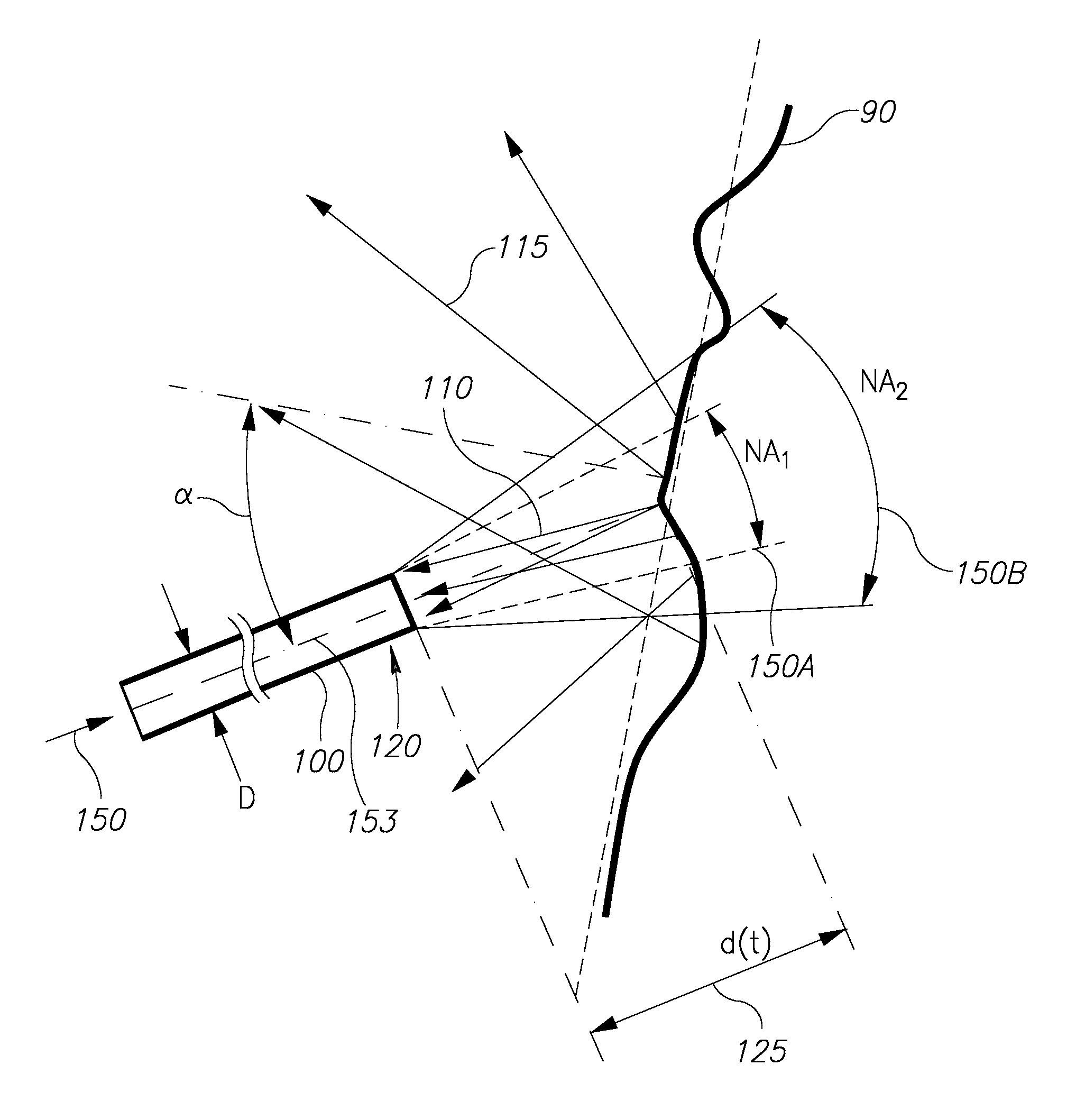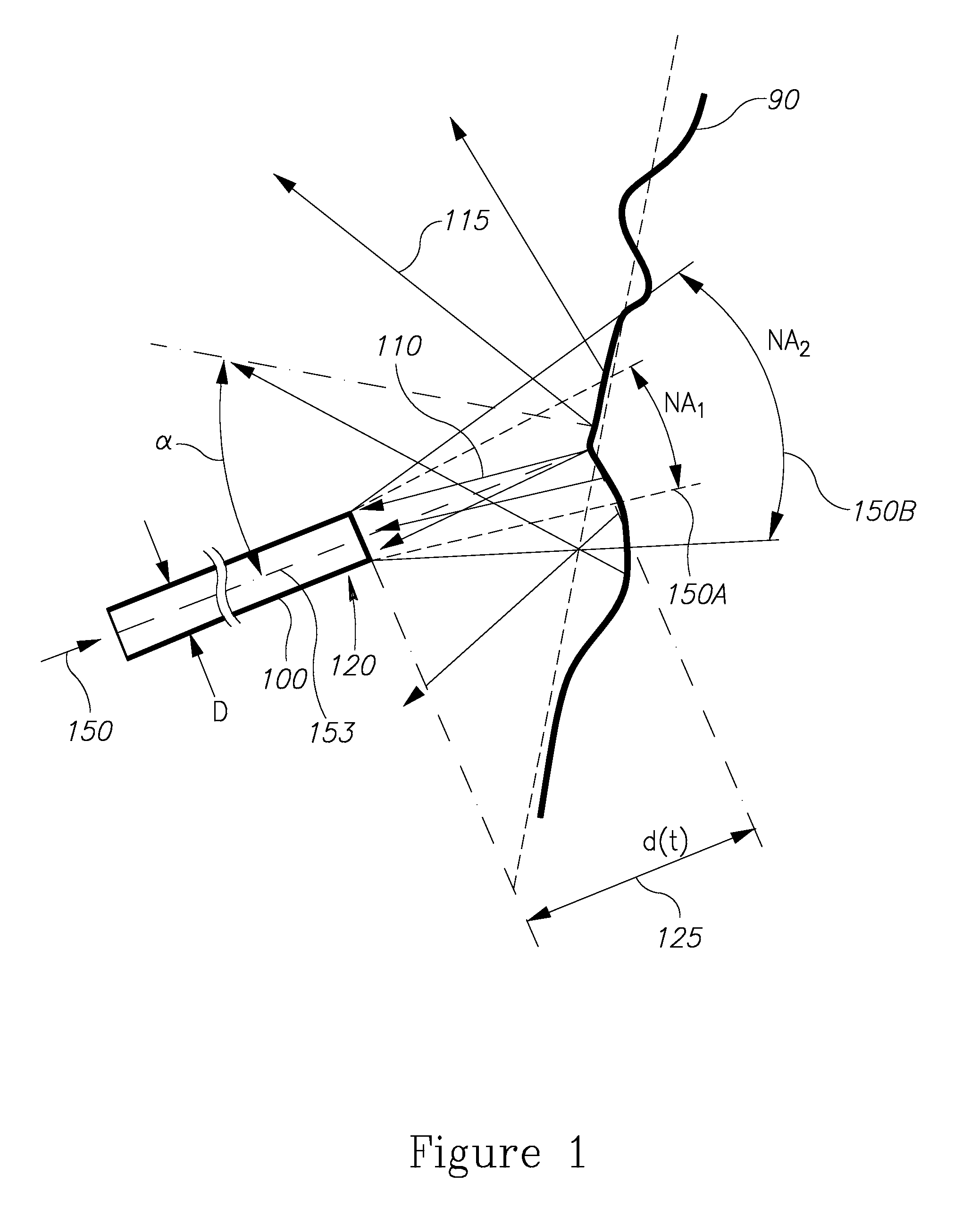Distance estimation between a fiber end and a tissue using numerical aperture modulation
a technology of distance estimation and aperture modulation, applied in the field of optical fibers, can solve problems such as difficult measuremen
- Summary
- Abstract
- Description
- Claims
- Application Information
AI Technical Summary
Problems solved by technology
Method used
Image
Examples
Embodiment Construction
[0014]Prior to setting forth the detailed description, it may be helpful to set forth definitions of certain terms that will be used hereinafter.
[0015]The term “laser” as used herein in this application refers to any type of laser—For example solid state (e.g. Neodymium, Erbium, Holmium, Thulium or Alexandrite), diode (e.g. in various wavelengths, such as in the range 532-1600 nm), gas (e.g. CO2, Argon) or fiber laser (e.g. Neodymium, Erbium, Holmium, Thulium or Alexandrite). Furthermore, laser beams referred to in the application may be continuous, pulsed, Q-switched, or any other temporal pattern.
[0016]The term “treatment beam” as used herein in this application refers to an intense laser beam transferred through an optical fiber to treat a target tissue. For example, treatment beam may be a pulsed laser beam or any other laser beam as defined above. The treatment may be ablative or non-ablative, as determined by the beam intensity in respect to a tissue ablation threshold of appr...
PUM
 Login to View More
Login to View More Abstract
Description
Claims
Application Information
 Login to View More
Login to View More - R&D
- Intellectual Property
- Life Sciences
- Materials
- Tech Scout
- Unparalleled Data Quality
- Higher Quality Content
- 60% Fewer Hallucinations
Browse by: Latest US Patents, China's latest patents, Technical Efficacy Thesaurus, Application Domain, Technology Topic, Popular Technical Reports.
© 2025 PatSnap. All rights reserved.Legal|Privacy policy|Modern Slavery Act Transparency Statement|Sitemap|About US| Contact US: help@patsnap.com



